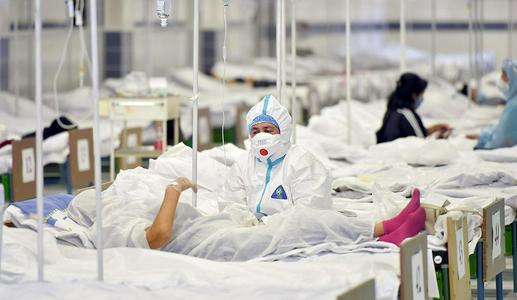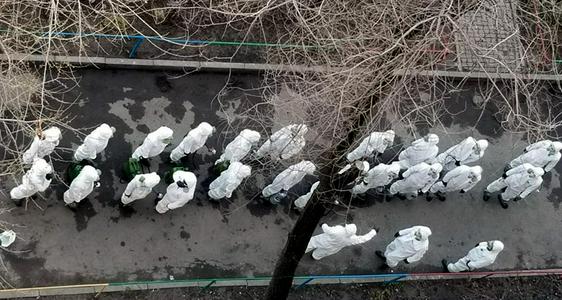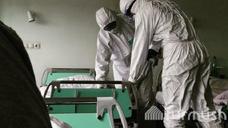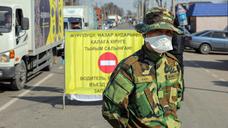 Doctors at the hospital demand the return of their chief physician. Still image from Axel Zhan’s YouTube channel
Doctors at the hospital demand the return of their chief physician. Still image from Axel Zhan’s YouTube channel
he chief physician of the Central State Clinical Hospital in Almaty has been removed from his post, following the infection of 182 of the hospital’s medical workers with the coronavirus, InformBuro reports (in Russian).
“The manager has been fired, nearly 200 of his staff are sick. It appears that, aware of his organisational failings, he himself handed in an offer to resign,” announced the head of Almaty’s public health authority, Tleukhan Abildayev.
Infection rates among medical staff in Kazakhstan have been a matter of concern for some time already. In recent days, the medical authorities in Almaty have stepped up the systematic testing of healthcare workers there. Following this, figures among staff at the city’s central hospital have skyrocketed, with an extra 172 cases (from an original 10) detected over the last three days. The hospital itself has now been temporarily closed and part of its workforce sent to a nearby sanatorium for quarantine.
After the announcement was made, however, a group of the hospital’s quarantined doctors released a video demanding chief physician Almaz Zhuvashev’s return.
This is not the first time medical staff at the hospital have been angered by the actions of the city health authorities. Almaty’s chief sanitary doctor, Ayzat Moldagasimova, caused outrage earlier this week after stating that one of the reasons for the high number of infections among hospital staff was “medical workers’ own failure to observe all safety procedures”. Hospital workers accused Moldagasimova of slander and asked the country’s president to look into the matter.
According to the latest figures on 15 April, Kazakhstan has 1,275 official cases of coronavirus. Adjusting yesterday’s statistics on rates of infection among medical staff to include even just the new cases at Almaty’s central hospital would give healthcare workers’ share of total infections in Kazakhstan to at least 23.4%, far higher than the roughly 10% figures reported in Europe. Kazakhstan’s testing figures among the wider population seem to be a little lower than the lowest testing major European countries (currently 4,300 per million compared for instance to the UK’s 5,600).









